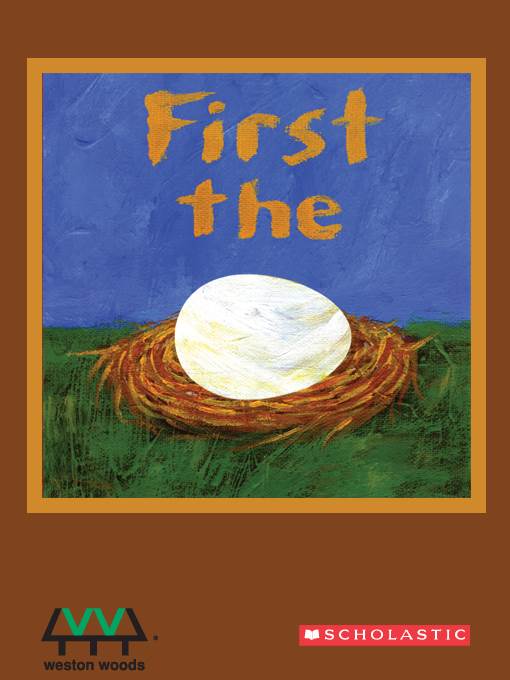
First the Egg
کتاب های مرتبط
- اطلاعات
- نقد و بررسی
- دیدگاه کاربران
نقد و بررسی

Elle Fanning's quiet voice and relaxed pace set the perfect tone for poring over Laura Vaccaro Seeger's story of transformations. Amid gentle music and subtle sound effects, the egg becomes a chicken; the tadpole grows into a ribbeting frog. As the pattern is established, Fanning adds a questioning rise to her narration--seed? caterpillar? paint?--inviting the listener to anticipate and respond. The production includes an interview with the author, who remarks upon her creative process, describing her journal sketches, commenting on the influence of her training in animation, and articulating her desire to shape this concept book with the notion that both things and creativity are transformative. A.R. (c) AudioFile 2009, Portland, Maine

August 20, 2007
In another nimble page-turner, Seeger (Black? White! Day? Night!)
toys with die-cuts and strategically paired words. She introduces a chicken-or-egg dilemma on her book’s cover, picturing a plump white egg in a golden-brown nest. Remove the die-cut dust jacket, and a hen appears on the glossy inner cover. The eggshell, thickly brushed in bluish-white and cream, also serves as the chicken’s feathers. This “first/then” pattern is repeated (“First the egg/ then the chicken./ First the tadpole/ then the frog”), with a die-cut on every other page. By flipping a page, readers see the cutout in two contexts. For instance, when an ovoid shape is superimposed on a white ground, it’s an egg; on a yolk-yellow ground, it’s the body of a baby chick. Seeger lines up the recto and verso of every sheet, maintaining a casual mood with generous swabs of grassy greens, sky blues and oxide yellows on canvas. Given the exuberant imagery, the occasional cutout (like the fingernail-size seed of a blowsy peony-pink flower) looks none too impressive. But if minuscule die-cuts seem barely worth the trouble, they do imply the potential in humble sources. Seeger’s clever conclusion brings all the elements together in an outdoor scene that returns readers to the opening: “First the paint/ then the picture… / First the chicken/ then the egg!” Ages 2-6.

























دیدگاه کاربران